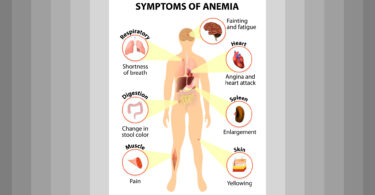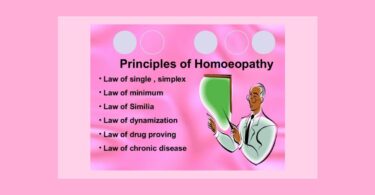How do you choose a homeopathic remedy, what do you go on?
This, of course, is the 64,000 dollar question! I could write a whole article on just this alone! (Oh wait, apparently that’s what I’m doing!) There is no easy answer. What are our considerations when we have to find a remedy?
1. Isopathy. Isopathy means giving the same “thing” back to the patient, in homeopathic doses, that caused his problem. For example, I had, some time ago, a cat with “leukemia”; but, on closer inspection, I found all her symptoms listed under the antibiotic she was taking! The treatment? I made the antibiotic into a remedy. Why? There was a clear cause-and-effect relationship! And, as we always say in homeopathy, “what something can cause, it can cure in small doses”! For further reading on “isopathy”, you might want to see my article, “How To Make Your Own Remedy”: https://hpathy.com/homeopathy-papers/how-to-make-your-own-remedy/
2. Keynotes of remedies. If you see a keynote of a remedy in a case? You can most likely just give the remedy! An example of that would be Bryonia’s famous “worse for least motion”, or Argent-nit’s “fear of heights with an impulse to jump”.
3. Peculiar mental symptoms. All things being equal, if there’s a peculiar mental symptom in the case, the remedy will have to cover that! For example, the patient says that insects are crawling up the walls (and hopefully, they’re not!) then the remedy you pick will surely have to cover this! Belladonna has this symptom.
4. Etiology. This one is very important and if you know what the etiology is in a case (the cause of the illness), the remedy will have to fit that. Some of our remedies are famous for having a specific etiology. Here are a few examples:
Ailments from cold, dry winds–Aconite.
Ailments from electricity–Phosphorus.
Ailments from acute grief–Ignatia.
Ailments after head injury–Nat-sulph.
Ailments from blunt trauma–Arnica.
Ailments from fatty, rich food–Pulsatilla.
Ailments from candy and sweets–Argent-nit.
When we see these famous “ailments from” cases, we go right to the remedy, we don’t repertorize. No one’s ever repertorized an Arnica case!
5. The peculiar symptoms of the disease. If the patient has a disease, the peculiar symptoms of the disease have to be considered. So, for example, if there are symptoms that every patient with a particular disease has, you wouldn’t make them part of your repertorization; but, anything peculiar, like, “aggravation time, 3 a.m.”, would be an important symptom. Now, I know that this is a mistake everyone has made! What it means is, if Crohn’s Disease was what your patient had, you wouldn’t go to the “Diarrhea” rubric, it’s not going to help you! They all have diarrhea! Look for what’s peculiar, how your patient has this disease, that’s what’s going to help solve the case.
6. Totality of symptoms. What do you do when you can’t find anything peculiar about the case, there are no mentals, there’s no etiology and no keynotes of remedies? You have to repertorize! Take a toothache case, for example. There’s nothing mental going on, there’s no cause but tooth decay and nothing peculiar; all you can do is write down the symptoms and see which remedy covers them all; for example–worse biting down, worse cold drinks, worse touch–find the remedy that covers all three, it might be something totally unexpected like Carbo veg. or Rhus tox; but, surprisingly, it will probably work!
7. The diagnosis. A lot of the time, diagnosis isn’t enough. Why? Because usually there are just too many remedies listed under the diagnosis for it to do us any good. Headache? Too many remedies! Vertigo? Forget about it, it’s a whole chapter! But sometimes, knowing what the person “has” can be extremely important because it often points to either a remedy or a small group of remedies that we can then differentiate among. So, this is the value of diagnosis. Diagnosis gives you the group of remedies that are appropriate for you to select from. This group differs depending on what condition you have. You would be surprised at how often symptoms are the same regardless of what condition you have; like diarrhea, for example. How many conditions have diarrhea: stage fright, food poisoning, stomach flu, colitis and so on. But if your patient has stagefright? We would give Gelsemium. Food poisoning? We would give Arsenicum. Colitis? We might give Nitric acid–in other words, if you come to me saying you’ve got diarrhea, I’m stumped! I’ve gotta know why! What is wrong with you? Do you have the flu? Was it something you ate? Did you have a fright? Bad news? Once I know this, I can pick a remedy.
8. The “essence”. What is that? It’s a remedy image that includes the personality of the remedy. When this is more compelling in a case than the so-called “disease”? Give the “essence” remedy. Some people call this the “constitutional remedy”. Some call it the “fundamental” remedy, or the “general” remedy; whatever you call it, it means you see, for example, the perfectionism and fussiness of Arsenicum, the ambition and impatience of Nux vomica, the friendliness, the openness and thirst for ice cold drinks of Phosphorus, and then, voila! You give the remedy. Sometimes the essence isn’t apparent at all, but you do see a very clear picture of a “disease”: arthritis pain and stiffness, worse in the morning, better limbering up, hot showers, worse resting, worse cold rainy weather…and you say, “Hey! I know what this is!” So you give the remedy, and what is it, by the way? Rhus tox? That’s right!
So, every time a case is before us, we are always juggling these possibilities; what kind of a case is this? Is there some unusual mental symptom? Is it the diagnosis that’s going to lead the way? Is it just a case of local symptoms requiring straight up and down repertorization? Are there remedy keynotes here? What’s striking about this case? Is there a clear etiology? How did this person get sick? Did he take a whole bottle of aspirin? Well, if he did, I’m not going to waste time finding his constitutional remedy that’s for sure, he’s going to get homeopathic aspirin! Why? Because the etiology is the most compelling! It’s more compelling than anything else in the case!
It may be in a given case that one day you’re giving a remedy based on a keynote, and the next day you’re doing a straight up and down repertorization…. Why is this? Because the case keeps changing and you can’t pin it down. Sometimes the patient isn’t clear about what the etiology is. There may be “maintaining causes” that he’s not aware of or not telling you, like inadequate nutrition, lack of fiber in the diet or sleeping with an electric blanket or on a water bed or a coffee or alcohol habit he won’t tell you about. These “maintaining causes” keep remedies from working or holding. So, as you can see, a lot of weighing and reweighing of symptoms takes place when we’re trying to figure out what to do in a case, or what remedy to give, and hopefully there’s an answer in there somewhere!
Why are doctors so clueless about mind-body medicine?
Dear Elaine,
“For this is the great error of our day that the physicians separate the soul from the body.”- Hippocrates.
What do you think?
K
Dear K,
I think they’re too busy separating money from our wallets to care!
Why do we wonder, why do we even ask, “Why does the doctor not consider this, why does the doctor not consider that……?”
“Why does he not know about Arnica? Why does he not know about Vitamin C? Why doesn’t he know about Cod Liver Oil and raw honey? Why does he not know about raw foods and juicing? Why does he think it’s OK to inject babies with mercury and formaldyhyde the day after they’re born?” And, yes, “Why does he treat body parts and ignore the whole person?”
Wonder no more! It’s because of money! This is a corrupt profession, driven by huge amounts of money, which would all dry up if people got well!
If this profession were practiced in earnest with a sincere desire to find cures for disease, patients would get well, would not need drugs, would go home, and it would be “game over”!
BUT, if done cleverly… people keep coming back: for their prescriptions, their booster shots, their questionable surgeries, their refills…everybody wins! And by “everybody”, I mean the doctors, the hospitals, the drug companies and all the people and businesses that are adjuncts to the doctors, the hospitals and the drug companies!
Think about it, what could possibly be more bogus than the “Well Child Visit”? OMG! You’re a child, which means you’re young and basically healthy, and you go to the doctor numerous times a year, so the doctor can tell you that… you’re well! I think it’s ingenious! But wait, you say! What if the child IS sick but no one knows it, the Well Child visit could save his life! Do you really think a disease with no symptoms can be diagnosed in ten minutes? Because that’s all the time you get with the doctor! He’s got a lot of well patients to see!
Now, what will put a stop to this nonsense? When enough patients start leaving their practice for holistic practitioners. Then they’ll realize they need to invite alternative medicine practitioners into their practice.
That’s when they’ll suddenly “know” all about the mind-body connection, and everything else.
How does homeopathy work?
Dear Elaine,
Can you recommend a book? I just want to understand “why and how” homeopathy works.
Is that all? That’s easy! Similars repel. Remember that from science class? The magnets? You can’t get two south poles or two north poles of two bar magnets to come together? They repel each other no matter how hard you try? Well, when two similar diseases come together in your body, they repel each other too! They have the same “energy”, just like the two magnets.
The remedies (homeopathic remedies) are fake diseases! Yes, you heard me right! Their job is to drive the similar disease out of the body! That’s why most of our remedies were originally toxic substances, like poison ivy (Rhus tox) and arsenic (Arsenicum). Their presence in the body as a homeopathic remedy repels the natural disease which is similar to it; and then, because the “remedy diseases” aren’t “real”, they vanish; so, you wind up with neither the disease, nor the remedy disease! Now, how much money have I saved you in books?





Wonderful article. I thoroughly enjoyed the humour and liveliness of Elaine. Keep up the good work!
Thank you! 🙂
As always,great article with style..
thank you for a wonderful article and lot of thinking and learning. You make it so easy but i know it isn´t. Therefore you are great.
gun
Thanks to everyone! 🙂
Thanks to the great work of the author and hpathy.
Hi Elaine,
I posted a question to you over on the ‘how to make a homeopathich remedy’ page last month but have not received a reply to date. Perhaps I might post it here instead?
Dawn says:
August 22, 2011 at 12:23 pm
Hi Elaine,
I want to be sure about my thinking and wonder if I may run my thought by you. In Sept 2010, I was prescribed Gentamicin as a nasal wash with Nystatin and saline water. I developed tinnitus in both ears shortly after the ten day course. I feel very strongly that the gentamicin is the cause of my tinnitus. Of course, the prescribing doctor says it was too minute of a dose (80mg) to cause any damage. If you read anything on gentamicin (which I sorely wish I had done prior to using), it states that hearing can be affected.
Here’s my question: Do I need to get another prescription of the same exact ingredients or can I use gentamicin only (since that is the suspected culprit)? I can’t help but feel desperate to have this be a cure for this “lifetime” mistake I’ve made (with the assistance of my former doctor).
Any help or thoughts would be appreciated.
I would sure love to know what to do next. Thank you, Dawn
Dear Dawn,
If you CAN get the exact same thing that caused the problem, that would be ideal. Then follow the directions in my article “How To Make Your Own Remedy”. Let me know if it cures the noises in your ear. Good luck!
dear dr,
YOUR ARTICLE IS VERY INFORMATIVE. YOU HAVE ALSO EXPLAINED IN ONE OF YOUR ARTICLES FOR PREPARING one’s OWN REMEDY. IN MY COMMENTS ON THAT ARTICLE I HAVE GIVEN INSTANCE OF PREPARING A NOSODE FROM MY OWN STOOL AND GOT MY STOMACH DISEASE CURED.
THANKS
DR SHEKHAR
That is why Homeopathy make us so happy and grateful
My grandson was prescribed Methadone for his pain from a back injury by his doctor.
The results have been a nightmare, causing him to put on extreme weight, loss of “love making” abilities, lowered sense of enthusiasm and more.
Meanwhile, the pain is only slightly less and he is strongly addicted to the Methadone.
My question is if it is advisable or possible to make a homeopathic Methadone?
Thank you for simplifying and making clear so much that has eluded me in homeopathy.
Sincerely,
Honey Fortney
Now, do you see why we need to take acutes seriously? Here was a simple Arnica case–possibly a Hypericum case or a Nat-sulph case–that because no one gave a remedy at the time, went chronic and became a big mess! And this is where all homeopaths become confused: “Is it too late to give him Methodone 30C?” “Should we give Arnica now?” “Should we take his constitutional case?” We have to start emphasizing acute prescribing! Everyone should have Arnica in their pocket like I do! I have Arnica 10M in my pocket, I have Arnica 200C in the car and Arnica 30C in my backpack as part of my Emergency Kit.
Hi Elaine, lovely article..well penned down with a sense of life pervading,, inspired the writer within me.. keep up the good work!